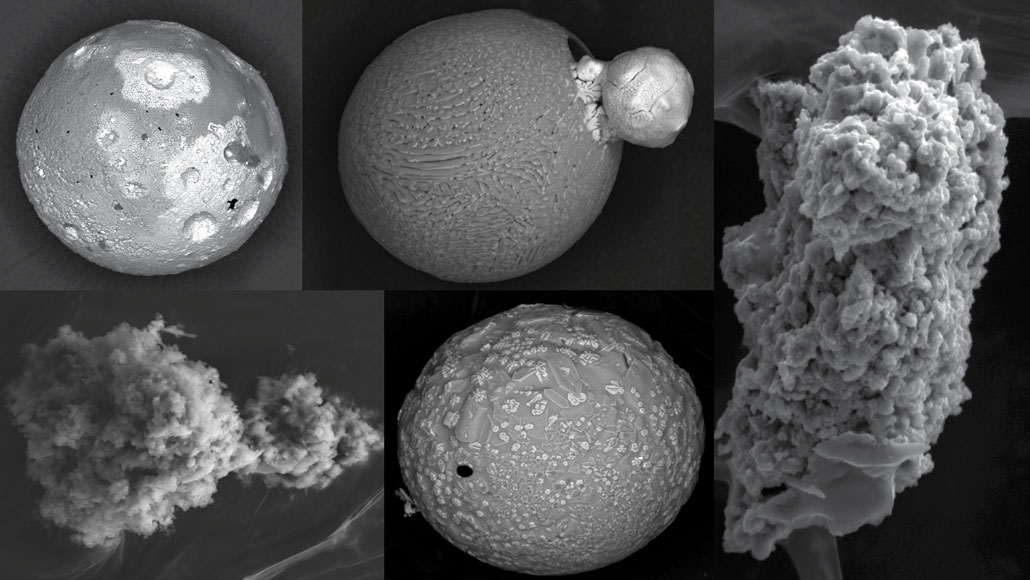Earth sweeps up 5,200 tons of extraterrestrial dust each year
Those micrometeorites come from both comets and asteroids

Five micrometeorites (pictured) found during excavations in Antarctica are just a smidge of the roughly 5,200 metric tons of space dust that fall to Earth each year.
Left two and right: J. Duprat and C. Engrand/CNRS; Middle two: C. Engrand and L. Delauche/CNRS